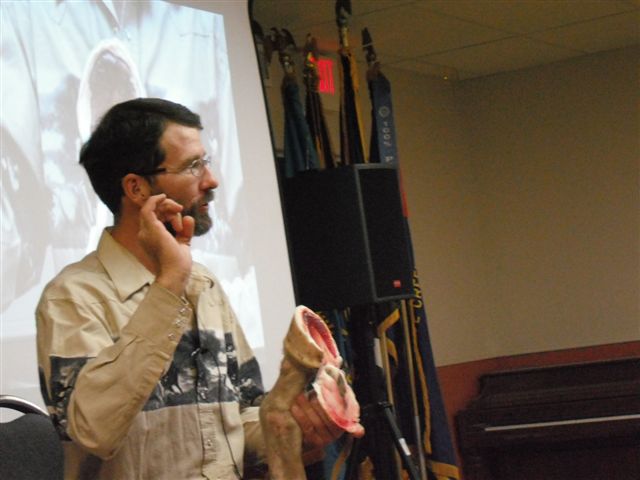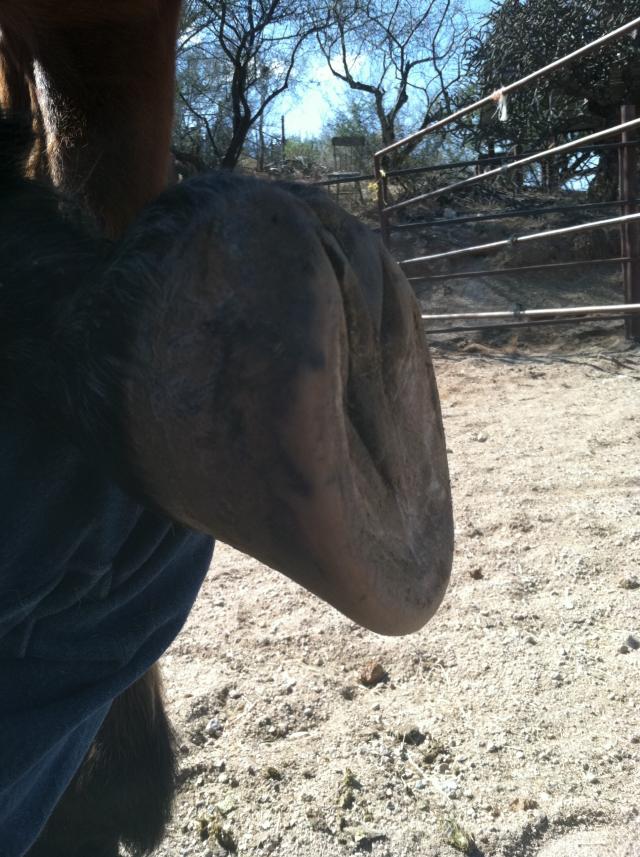During a consultation with Dr. Tomas Teskey, DVM, he said that horses feet should “grab the ground and not go squish.” In that instant I got a visual of a perfectly formed hoof capsule with a deeply concave sole thrusting against the ground with the weight of the horse driving it into maximum flexion, heels opening with rear frog impact, the sole flattening as the weight of the horse rolls forward. I froze the screen in that instant. My complete focus went to the next frame…the exhausted phase of flexion (when energy is stored). This immediately turned to gripping as the weight of the horse against the sole began to release and traction took over for an instant. The forward and downward momentum of the horse causes the hoof capsule to break over, releasing the recoiled energy. Finally, the hoof is returned to it’s relaxed phase with enough stored energy to repeat the cycle. That particular aspect of hoof function, the gripping, had escaped my obsessive mental scrutiny of hoof mechanics. This visual was great in that it held an excellent visceral effect.

I find myself constantly struggling to find ways to get horse owners to feel what is going on in their horse’s feet. True soundness depends on the horses ability to feel the ground under the weight of his body, through all gaits and over all terrain. It’s the weight of the horse working for him instead of against him that builds this “grabbing” effect. It takes a considerable amount of concussive forces and contortion of the hoof capsule to develop the foots ability to resist these same forces. We all hear about the importance of concavity to the solar surface of the hoof capsule. Many of us understand that it needs to be built not carved. Fewer know how good it must feel to the horse to have the strength to grab the ground while their flying hooves cover a variety of terrain.

A bad “squishing” hoof.
A staggering amount of domestic horses are experiencing the squishing effects of their enormous body weight crushing the soft tissues in their hoof capsule. Whether a horse is shod or in poorly shaped bare feet, the hoof mechanism is often compromised and the weight of the horse slowly compresses the bony column against the solar surface of the hoof capsule. The sole becomes flat and thin and the soft tissue becomes sandwiched in between. The analogy of a plunger has often been used to describe the function of the hoof capsule. In the case of the shod or poorly shaped bare hoof, the plunger is made of thin poor quality rubber and it is stuck in the depressed phase. In the contrary example of the properly shaped and conditioned bare hoof, the plunger is made of high quality thick rubber that takes an impressive amount of weight and strength to compress and/or flex. This type of hoof becomes continually strengthened over time as the weight of the horse pushes against the ground that it covers simultaneously flexing and resisting this same flexion under the strain, grabbing the earth with every pounding foot fall.
This is easy to identify with. I picture a human having a foot with the following issues: fallen arches, loss of circulation from diabetes, arthritic joints, and/or ingrown toenails. Now picture this person trying to perform any kind of physical task.

A good “grabbing” hoof.
In a different situation I picture a human with an undamaged, healthy, functioning foot wearing brand new, perfectly fitting, expensive running shoes. This would be similar to a horse with a properly shaped fully functioning foot wearing hoof boots. In my experience these “fully functioning” feet are difficult to develop on horses that are being cared for in a traditional manner. Trimming alone can be slow, frustrating, and have a futile outcome. There has to be a foundation for hoof health. These days, before I accept a new client I want to see four things:
- A diet of grass hay.
Every time I’ve ever removed alfalfa or alfalfa products from a horse’s diet I’ve seen improvement in their feet, as well as their behavior. - Adequate movement.
This is the biggest problem that I see domestic horses facing. They aren’t meant to be alone or in cages. - Stone particulate footings, such as pea gravel, chat, and sand.
These types of footings, when spread at a depth of 4″, offer the hardening qualities of stone while simultaneously providing a “self leveling” cushion that helps horses distribute their weight more evenly throughout the solar surface of their feet, as well as their entire body. Studies by Dr. Robert Bowker show that standing on 4″ of pea gravel improves circulation by as much as 40%. - A well balanced and appropriately timed trim.
I put this last on the list because it’s not fair to the horse to force our best guess, or our idea of a proper trim on them without addressing the previously mentioned elements. We should only remove what is ready to exfoliate. Properly formed feet should be encouraged not carved.
The more we take the time to consider the needs and abilities of horses the more valuable we can be to the horse.
David Landreville, Landreville Hoofcare




